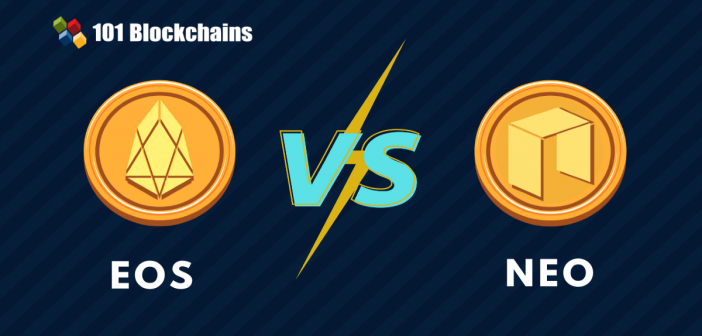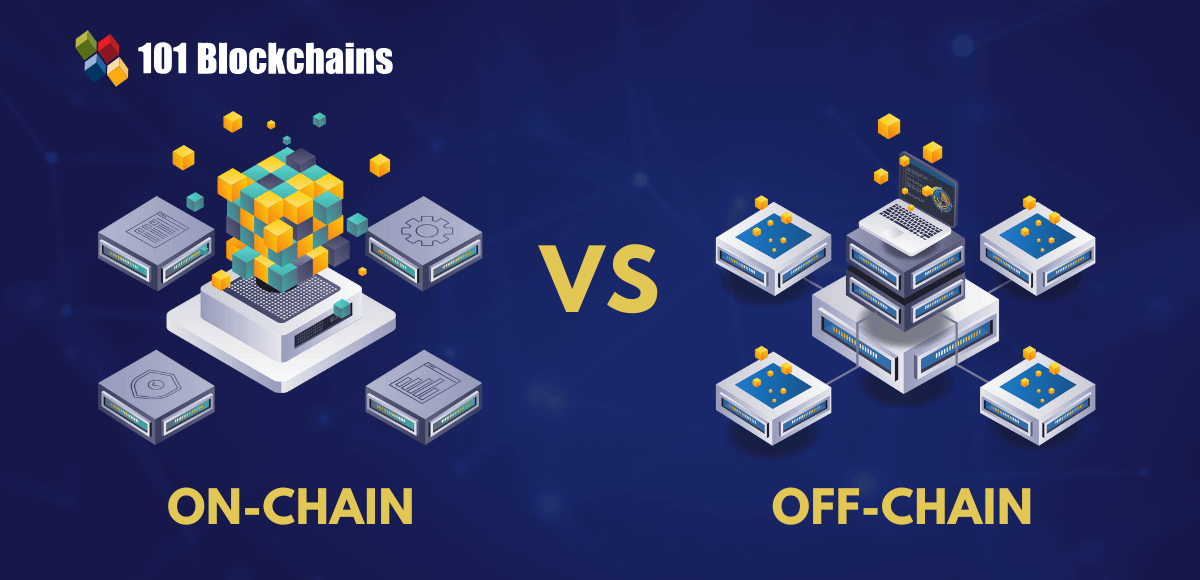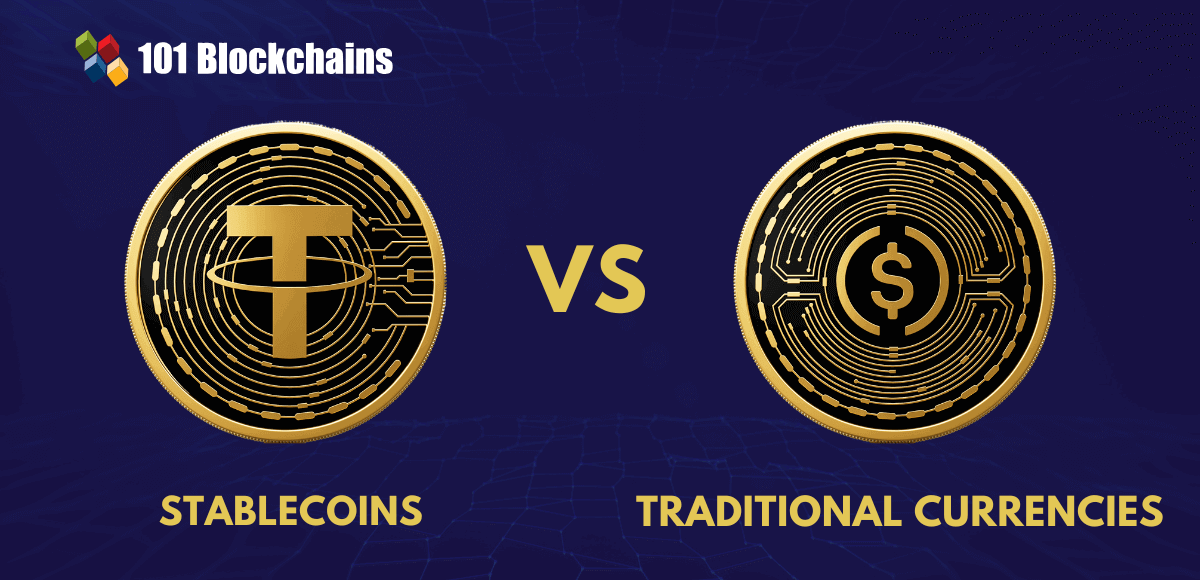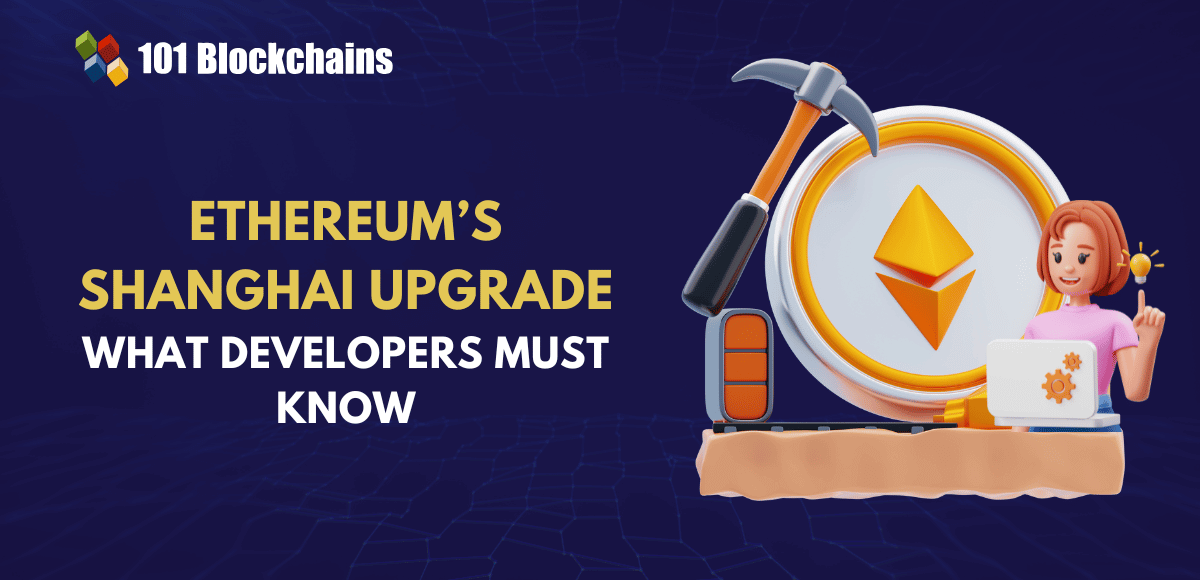Learn how blockchain truly works, master key definitions, and uncover what makes smart contracts so "smart." Dive into the fundamentals, gain valuable insights, and start your blockchain journey today!

- Comparisons
101 Blockchains
- on June 12, 2018
EOS vs NEO: The Strongest Competitors of Ethereum
This article compares EOS vs NEO, two of the most promising blockchain platforms that specialize in dApps and worthy competitors of Ethereum.
Blockchain technology evolution has resulted in the emergence of exciting projects all gunning for people’s attention. EOS vs NEO is the latest tussle taking shape, as developers continue to explore platforms for hosting smart contracts and decentralized applications.
As you know, Ethereum, the blockchain giant, introduced the fundamentals of decentralized applications and revamped smart contracts. With the formation of Enterprise Ethereum Alliance in 2017, the platform is stronger than ever.
NEO and EOS have been gathering momentum in recent months because of the record-breaking bull-run of Bitcoin and other cryptocurrencies. However, these two platforms are mostly known for their potential in the development of smart contracts and decentralized applicants.
Today, we take a closer look at the core of these blockchain platforms, their strengths, and weaknesses, and analyze whether EOS or NEO can truly compete against Ethereum or not.
Enroll Now: Ethereum Development Fundamentals Course
Understanding EOS: Core Technology and Purpose
EOS is a decentralized blockchain technology project that seeks to provide high scalability for the deployment of dApps (dApp development guide) and blockchains. It dubs itself as the most powerful blockchain-based decentralized system that enables the development, hosting, and execution of dApps and smart contracts.
To understand what is EOS blockchain, you should focus on their consensus algorithm. Unlike Ethereum, EOS uses Delegated Proof-of-Stake (DPoS) consensus algorithm. This upgrade allows EOS to eliminate the need for transaction fees and offers the ability to more transactions per second (TPS). The highest recorded TPS of EOS is 3,996 compared to 15 TPS of Ethereum. So, EOS trumps here in the Ethereum vs EOS comparison.
Understanding NEO: Core Technology and Purpose
NEO, often termed as the Ethereum of China, is driven by the vision of developing a smart economy. It is also the first public blockchain project from China. The strongest proposition of this platform is the NEO dApps ecosystem.
NEO aims to fulfill all the functionalities of Ethereum but in a better way. For example, NEO uses Delegated Byzantine Fault Tolerance (dBFT) consensus mechanism instead of the PoS protocol of Ethereum. NEO even upgraded to dBFT 2.0 for more stability. As a result, NEO is capable of handling 10,000 TPS. This indicates that NEO is better at transaction handling in the NEO vs Ethereum debate.
Learn more about NEO and Ethereum in the comparison guide on NEO vs Ethereum: Which is a Better.
NEO vs EOS: Native Currency
NEO is the native token that powers the NEO platform used for the development of decentralized applications. At inception, 100 million coins were created in the Genesis Block. Fifty million coins were sold to early investors and the remaining fifty million are locked into a smart contract. Every year, 15 million coins are released, to fund the development of long-term goals.
You should also study about NEP5 as NEP-5 tokens from NEO are considerably superior to ERC tokens too.
EOS is the token that powers EOS.IO, which acts as an operating system in a computer that manages and controls EOS blockchain. A developer needs to hold EOS coins instead of spending them, to use the network resources to build and run decentralized applications (what is dApp).
Between June 26, 2016, and July 1, 2017, a total of 200 million or 20% of the total EOS tokens were distributed. Currently, 1.02 billion tokens are being distributed on an ongoing basis. 100 million coins are being held in an escrow for block.one.
EOS vs NEO: Transaction Speed and Fees
Transaction speed has always been one of the major benefits of NEO. NEO is mostly known for its high transaction throughput that supports up to 10,000 transactions a second. For consensus bookkeeping, nodes are selected randomly to process transactions on a network based on overlapping networks of trust. Currently, NEO project does not charge people any fees for using the network.
EOS, on the other hand, has grown in popularity in part because of the huge number of transactions it can process a second. High scalability means the project blockchain can handle over one million transactions a second, through horizontal scaling. However, the current recorded highest TPS is 3,996.
EOS does not require people to make micropayments to perform tasks on the blockchain or send messages. Instead, individual developers are allowed to determine their transaction fees which are usually low. Companies can come with their monetization strategies.
NEO vs EOS: Blockchain Protocol
EOS.IO relies on delegated proof-of-stake and a role-based permission concept for operations. The blockchain protocol allows for flexibility when it comes to making instant decisions such as rollback, freezing, and fixing of apps infected by bugs.
Learn more about the top 7 benefits of EOS blockchain.
NEO, on the other hand, uses Byzantine Fault Tolerance which it says is an improvement of proof-of-work and proof-of-stake. With this algorithm, anyone who holds a NEO can vote on who will be their Consensus Nodes responsible for deciding a block.
While NEO is focused on the smart economy, EOS more aimed at building dApps for a digital world. EOS dApps landscape complete list suggests that they are on their way but it would take some time.
You should take a look at the table below to have a better understanding of EOS vs Ethereum vs NEO
| EOS | NEO | Ethereum | |
|---|---|---|---|
| Launch | January 2018 | February 2014 | July 2015 |
| Country of Origin | USA | China | Russia |
| Consensus Algorithm | Delegated Proof-of-Stake (DPoS) | Delegated Byzantine Fault Tolerance (dBFT) | Proof-of-Work (PoW) and Proof-of-Stake (PoS) |
| Throughput (Recorded Max.) | 3,996 TPS | 10,000 TPS | 25 TPS |
| Transaction Time | 1.5 secs | 15 secs | 6 mins |
| Transaction Cost | 0 | 0, but requires 0.001 GAS for transactions larger than 1024 bytes | Variable, current average transaction fee is 0.0081 ETH |
| Scalability | Yes | Yes | No |
Verdict
Both EOS and NEO have the potential to grow with the evolution of blockchain technology. However, EOS seems to have had a better year and seems to have a higher chance of taking Ethereum as a preferred platform for smart contracts and decentralized applications.
If you’re more interested in Ethereum fundamentals and development, you should take a look at our upcoming Beginners Guide to Ethereum Development Course.




